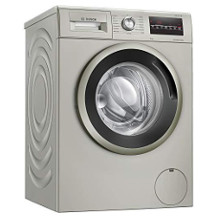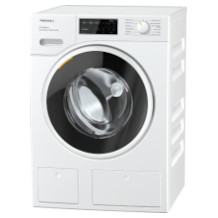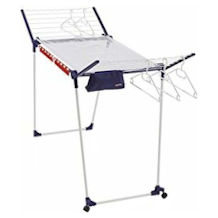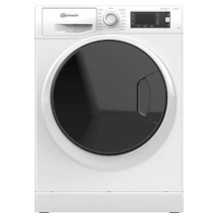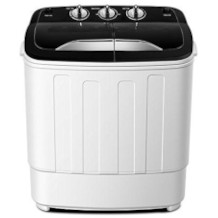Washer dryer purchasing advice: how to choose the right product
- What you need to know
- Washer dryers are 2-in-1 combination appliances that combine the features of a washing machine and a tumble dryer.
- Most washer dryers are front-loading, but you can get top-loading models too.
- The most common types of drying technology are heat pumps and condensers.
- When choosing a model you need to consider capacity, number of washing and drying programs, safety, and extra features.
- Depending on the model, washer dryers can be quite energy efficient, but only if you use them properly too.
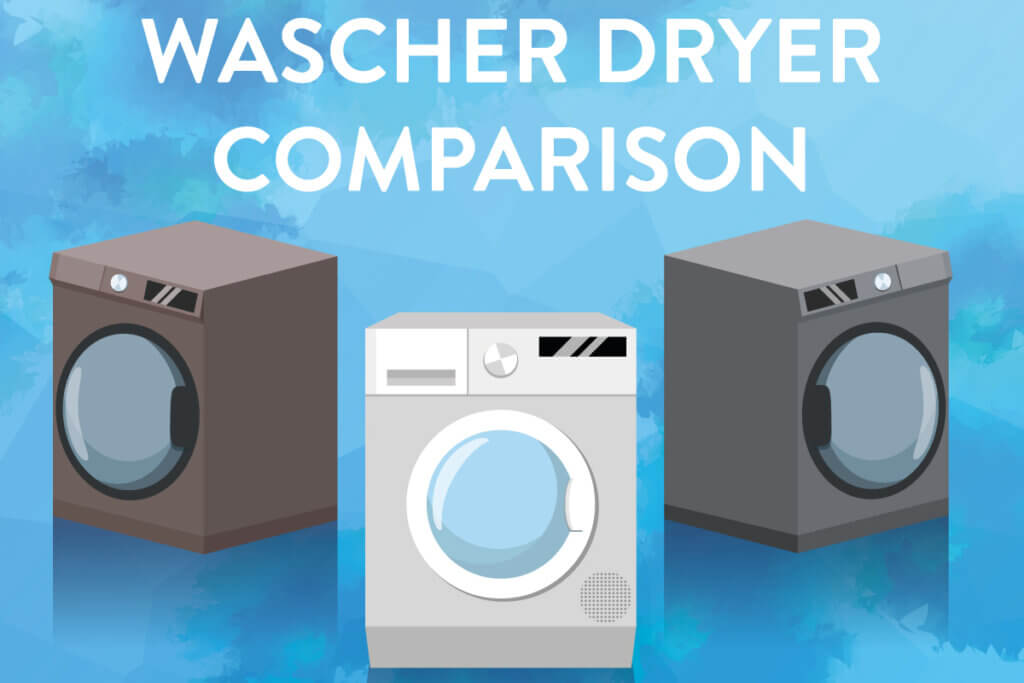
Washing and drying in one appliance
Washing machines have been an essential part of most households for a while now. But what do you do with your wet clean laundry? The two classic options are a drying rack or a tumble dryer, but sometimes there just isn’t enough floor space for either.
In principle, there are two solutions to this issue of space. The first is to get a washing machine and a tumble dryer that can stack on top of each other, but this is somewhat of an inelegant solution and still can be subject to the constrictions of available space. The second solution is to get a 2-in-1 washer dryer, which combines the features in an appliance the same size as a standard washing machine.
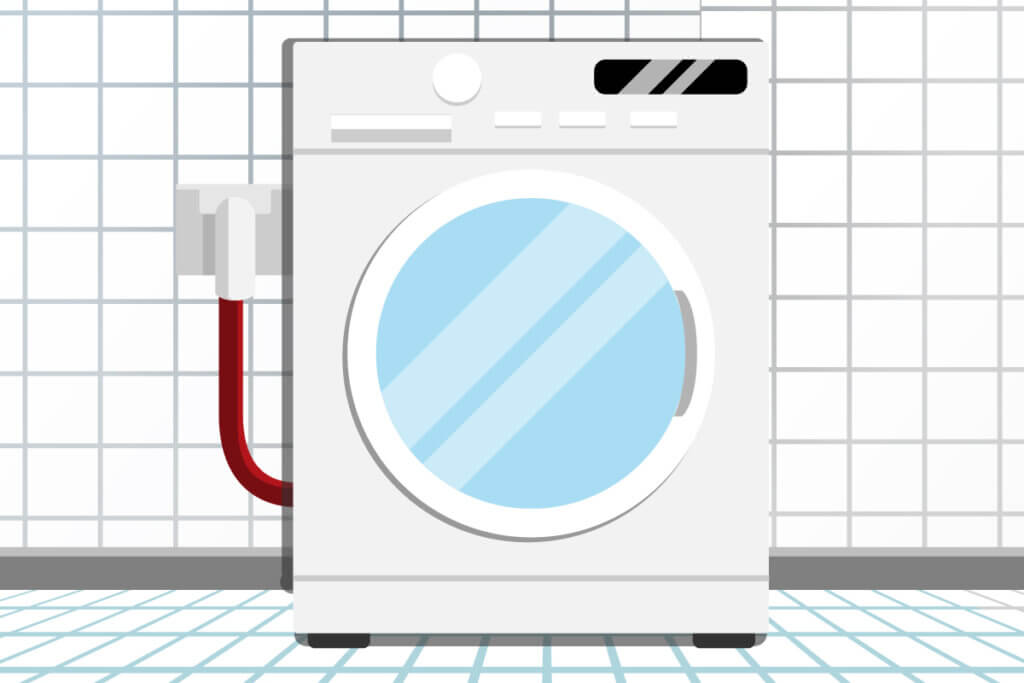
The 8 key advantages of washer dryers
Of course, the most potent argument for a washer dryer is that it takes up less space – the same amount as a standard washing machine. Beyond the question of size, there are a few other arguments for a combination washer dryer compared to two individual appliances:
Advantages
- Space saving
- Saves the cost of a tumble dryer
- Washing and drying possible without moving laundry
- Only one electricity and water connection needed
Disadvantages
- Washing and drying not possible simultaneously
- Drying capacity lower than washing capacity
- Energy consumption higher than for single appliances
Compared to air drying, there are also some advantages and disadvantages to weigh up:
Advantages
- No need to hang up your laundry
- No space needed for drying
- Laundry dries quicker
- Does not increase the humidity in your home
Disadvantages
- Drying consumes electricity
- Washer dryers are more expensive than washing machines
Buying tips
When choosing your washer dryer, you need to pay attention to the selection of washing and drying programs, the capacity, and whether it has any extra features to make your life easier.
A question of size
Washer dryers have different capacities for washing and drying. As a broad rule, most models have a washing capacity of 1.7 to 2 cubic feet (7-8kg), while their corresponding drying capacity will be 1 to 1.2 cubic feet (4-5kg). The reason for this is that wet laundry takes up less volume than dry laundry, which means you can fit more things into a washing cycle than a drying cycle.
Tip
When choosing a washer dryer, it is very important to go for a model with a capacity that corresponds to your needs as closely as possible.
Since the capacities of washer dryers are different for washing and drying, if you do a full load of washing you’ll have to remove some of your wet laundry before starting the drying cycle. However, since most people don’t put on a wash cycle with a completely full load, this isn’t always an issue.
The right capacity for you depends on a few factors:
- How many people will be wanting to wash and dry their laundry at the same time?
- How often do people in your household do their laundry?
- Do people in your household do extra laundry due to their job or sports?
As you might have guessed, there isn’t a hard and fast rule for determining the right capacity for you. The following table gives a rough guide:
| Rated capacity | Household size in persons | Suitable for |
| 1 ft³ (4 kg) | 1 or 2 | Single household, couples with low laundry load |
| 1.2 ft³ (5 kg) | 2 or 3 | Average household |
| 1.4 ft³ (6kg) | 3 or 4 | Family with high laundry volume |
| 1.7 ft³ (7kg) | 4 or 5 | Family with high laundry volume |
| 2 ft³ (8kg) | More than 5 | Large families |
What are the most important programs to have?
After you’ve decided on capacity, the next thing to check is what kinds of washing and drying programs a model has. The following washing programs are essential – please note that the exact names can differ from manufacturer to manufacturer:
- Easy care
- Color
- Kitchen laundry
- Delicates
- Cold wash
- Intensive was
- Short wash
- Cotton wash
- Rinse
Likewise, your washer dryer should have the following drying options:
- Gentle drying
- Cupboard dry
- Iron dry
- Crease protection
In addition to these essential programs, some models have a feature which can help prevent wrinkling by using steam. Most modern appliances also have an eco-mode which will take a bit longer but save on electricity and water. Other non-essential modes include those for synthetic fabrics, curtains, silk, and jeans.
Features for convenience and safety
Alongside the basic washing modes, a lot of washer dryers are fitted with various features to make your life safer and easier. Read on for an overview.
Load sensor
This feature senses how much laundry is in the machine’s drum and automatically adjusts the run time and amount of water needed for the cycle. As a result, the load will be washed as efficiently as possible. Some models even have a sensor to let you know exactly how much detergent to use depending on the load.
AquaStop
Most modern dishwashes have safety features like overflow protection and AquaStop. This protects against water damage. In the event that the inlet hose is damaged, the system will cut off the water supply to prevent flooding.
Control panel
Given the abundance of different programs and features on modern appliances, having a display is now essential. While a lot of models still work using a dial to set different programs, they often have displays and buttons (sometimes even touchscreens) to set any extra parameters or different start times. Some models will also be able to self-troubleshoot any issues and show them on their display.
Smart connectivity
Washer dryers can also connect to the internet nowadays. Models with smart connectivity can connect to your home Wi-Fi network, which means you can control them from anywhere via your smartphone. For example, you can set a wash while you’re at work and program it from there to finish when you get home.
Noise
No washer dryer should exceed 60 dB when washing and 80 dB when drying. However, these are still quite loud volumes, so if you want a particularly quiet machine then you’ll have to look for a model with a so-called silent motor. To do this, manufacturers equip their machines with inverter motors, which are quieter and vibrate less, which also makes them more durable than standard washing machines. These models produce about 50 dB when washing and less than 80 dB when drying.
Adjustable spin speed
Spin speed is measured in rotations per minute (RPM). The higher the rpm during the final rinse cycle when washing, the lower the residual moisture in your laundry, making it quicker to dry. However, high RPM spin cycles can damage certain textiles, which means it’s a good idea to get a machine which lets you set this manually if you want.
Types of washer dryer
Washer dryers come in a range of different styles, with different drying technologies. There is no such thing as the ultimate washer dryer, as different designs have their own respective advantages and disadvantages. Read on for a more detailed overview of the main design types you can expect to find on the market.
Front loaders and top loaders
Washer dryers, much like standard washing machines, come in two main designs. Depending on where the door to load the washing drum is, these are known as front-loading and top-loading.
Front loaders
Front loaders account for 90% of the washer dryers sold on the market. They have the same dimensions as a typical washing machine. If you’ve got the space at home, we can strongly recommend going for a front-loading machine as they have numerous advantages over top loaders, and there are many more models to choose from on the market.
If you want to integrate your appliances underneath your kitchen countertops, make sure you get a model with a removable top plate – manufacturers will usually specify whether a model can be inbuilt. Having said this, you can’t get fully integrated washer dryers since the front door is curved and made from glass – you may be able to put a cabinet door in front of the appliance though. Depending on the model, front-loading washer dryers have a load capacity between 1.7 and 2 cubic feet (7-8kg) for washing and 1 to 1.2 cubic feet (4-5kg) for drying. This is more than what you tend to get with top-loading machines. Due to their wide design, these models are also very stable. Front loaders also tend to have a wider range of modes and programs than top loaders.
Of course, as with any design, there are also some disadvantages, as shown in the comparison below:
Advantages
- High capacity
- Multiple wash programs
- Quiet
- Stable
- Top shelf can be used for storage or removed for integration
- Wide choice of models on the market
Disadvantages
- Take up a lot of space
- Loading and loading requires bending over
- Interrupting and adding laundry not possible
- Seals can deteriorate and leak
Top loaders
Although top-loading washer dryers are inferior to their front-loading cousins in many respects, they do have one crucial advantage. The reason many people buy washer dryers in the first place is space constraints, and top loaders are much more compact than front loaders. This means you can fit them in extremely tight spaces. In addition, you can interrupt the washing cycle in top loaders (since the water won’t come out when you open the door) to add any extra laundry.
However, due to their slim design, top loaders are often quite unstable and noisy. Likewise, since you need to be able to access the top of the appliance, you can’t put them under any countertops. In fact, you’ll have to leave over a foot (30cm) of space free above your top loader so you can open the door properly.
Top loaders aren’t particularly popular, which means there aren’t that many models to choose from on the market. This also means that prices are generally a bit higher compared to front loaders.
Advantages
- Very narrow
- Load and unload while standing
- Leak-proof
- Laundry can be added during a cycle
Disadvantages
- Not suitable for installation under countertops
- Space must remain free above appliance
- Lower capacity
- Loud
- Small product selection
- Comparatively expensive
Drying technologies
In washer dryers, you do get different drying technologies, but they are all fundamentally based on condensation. In other words, they are based on using warm air to absorb the moisture in your wet laundry. The difference in technology comes in how washer dryers heat this air up. This is either done by a condenser or a heat pump. In addition, you can also get exhaust air dryers, but these are quite outdated nowadays.
Condenser and heat pump drying are based on the same process – heat pumps are a modernized development of condensers that provide more efficiency.
Heat pumps
The first heat pump dryer came onto the market in 2015, and since then studies have shown that they are far more efficient than condensers. This is because heat pumps use an energy exchanger to reuse heat energy extracted from the moist exhaust air. In other words, the exhaust air heats the intake air and the intake air simultaneously cools the exhaust air to condense the excess water. As a result, heat pump dryers are up to 40% more efficient than condenser dryers.
Ambient temperature matters
Heat pump dryers work best at room temperature. If your appliance is in a cold cellar, it will need more time and energy to heat up the intake air.
Heat pump dryers may be more efficient, but they are also currently more expensive than condenser dryers. However, prices are continuing to fall, so you can expect that soon all new washer dryers will be fitted with heat pumps.
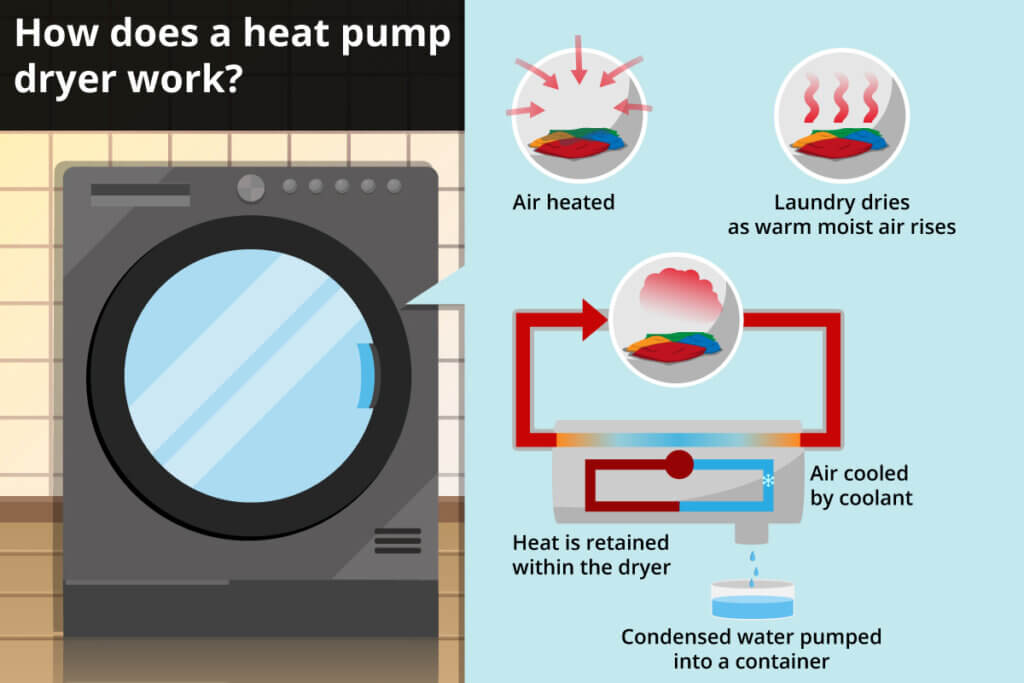
Compared to condensers, heat pumps offer some clear advantages, but also some disadvantages:
Advantages
- Low power consumption
- High energy efficiency
- Gentle drying
- No additional water needed for cooling exhaust air
Disadvantages
- Expensive
- Drying takes longer
- Slower at colder ambient temperatures
- Loud
Condensers
Fundamentally, condensers aren’t that different to heat pumps. The main difference is that condensers use an electric heating element to warm up the air that gets pumped into the drum. Unlike heat pumps. the energy used to do this doesn’t get reused – instead, it gets conducted out of the washer dryer into the ambient air.
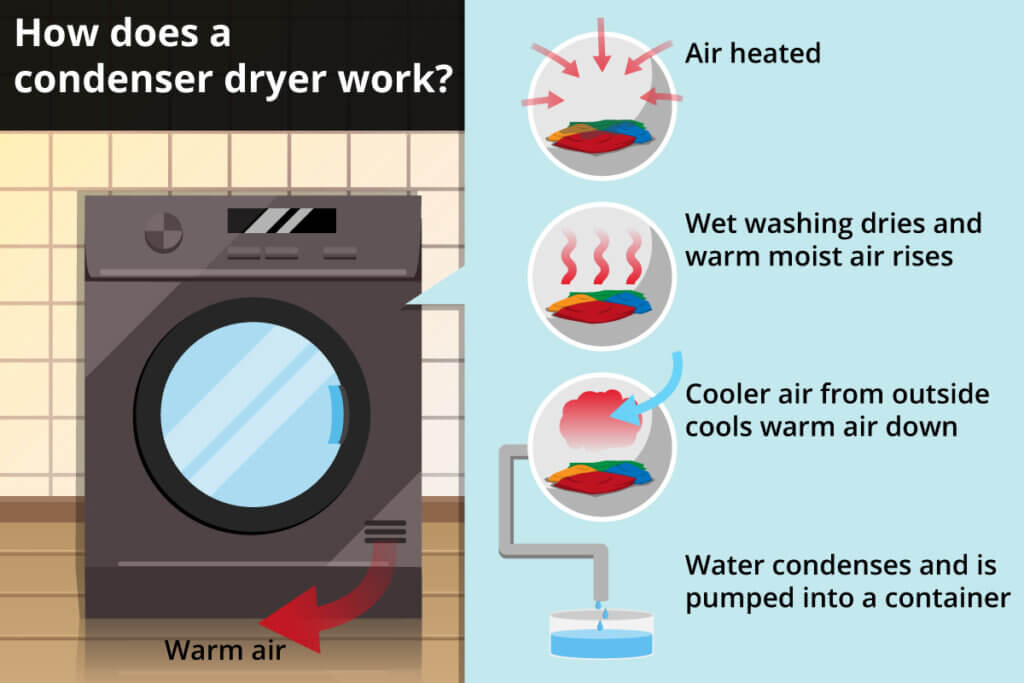
Condenser dryers cool the warm and humid exhaust air using either air or water. This means that the appliance can put out a considerable amount of heat, which you might find advantageous during winter in cooler rooms. One of the disadvantages of this method is that it uses excess water.
Advantages
- Quick drying
- Quieter than heat pumps
- Cheaper than heat pumps
Disadvantages
- Low energy efficiency
- Less gentle on your laundry due to higher heat
- Additional water required for cooling
Exhaust air
Exhaust air dryers are now extremely outdated. These dryers pump warm air through a rotating drum, and then pump it out via an exhaust hose. This technology is extremely inefficient and is largely obsolete nowadays. Moreover, the excess heat and moisture can lead to mold growth, especially around the outlet hose.
Advantages
- Very cheap
- Quiet
- Fast drying
- No need to empty condenser tank
Disadvantages
- Very inefficient
- High power consumption
- Emits humid air and heat
- Needs an exhaust hose that goes outside
Using your washer dryer
Once you’ve got your washer dryer, there are a few things you should know to ensure it works as efficiently as possible and lasts for a long time.
Location
The best location for your washer dryer will depend on the type of drying technology it uses.
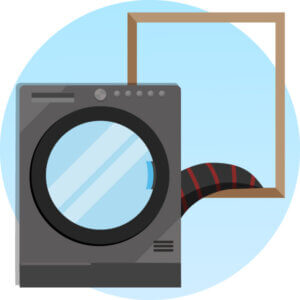
Exhaust air dryer
These dryers need an outlet hose, which means they are best located near to windows or the outer walls of your home. Don’t let the exhaust air out into your home, as it will increase the humidity and cause mold to form.
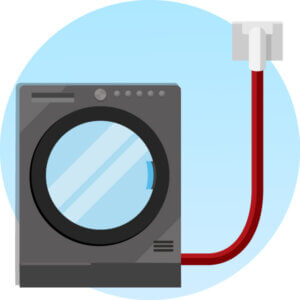
Air cooled condenser dryers
Condenser dryers that use ambient air are best installed in cooler, dryer rooms – in other words, don’t put them in your bathroom or kitchen. They will need an electricity and water supply, so make sure you have one nearby.
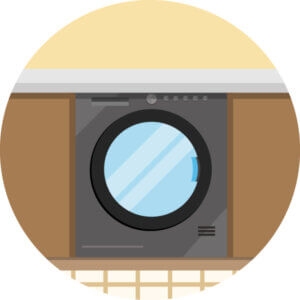
Water cooled condenser and heat pump dryers
These washer dryers are generally quite undemanding in terms of location. They work best at normal room temperature, and need a power and water supply, so somewhere like your kitchen or bathroom will work well.
Irrespective of the location, it goes without saying that your washer dryer needs to be on a stable, flat surface, and the loading door needs to be freely accessible. If your machine is on a slope, it can damage the motor during a spin cycle. Since these appliances can move around during fast spin cycles, it’s a good idea to have a bit of space between them and walls or other furniture.
What can and cannot be put in a washer dryer?
You can’t put everything in a washer dryer. Some textiles and fabrics are delicate, so always check. It’s often the case that something can be washed in a machine, but cannot be tumble dried.
Not suitable for tumble drying
Some textiles should never be tumble dried. These include:
- Silk
- Wool
- Synthetic fabrics
Follow the care instructions!
To be on the safe side, it’s always best to check the instructions on your clothes. There are some standardized symbols which indicate what you can and cannot do with the fabric. These are always in the same order, and are as follows:
- Washing bowl: washing
- Triangle: bleach
- Square: drying
- Iron: iron
- Circle: dry cleaning
So, for washer dryers, the washing bowl and the square symbols are the most relevant:
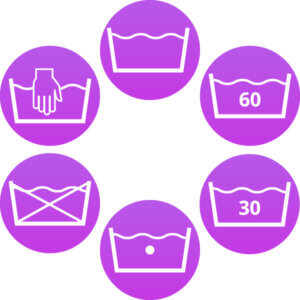
Washing
The number inside the washing bowl indicates the maximum washing temperature. In some cases, this will be indicated by dots inside the bowl. One dot means a maximum temperature of 30 °C (85 °F), two dots mean 60 °C (140 °F), and three dots mean 90 °C (195 °F). If there’s one line under the basket, it means the fabric should only be spun gently. Two lines mean the fabric should not be spun at all. A hand in the bowl means that it should not be washed in a machine – it should be hand washed instead. If the bowl is crossed out, the fabric should not be washed at all.

Drying
An empty circle inside the square means that the laundry is suitable for tumble drying. A crossed-out circle means it should not be tumble dried. One dot means it should be dried gently, two dots indicate very gentle drying, and three dots mean extremely gentle drying.
Images 1-9: © FinalCheck

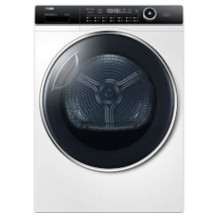
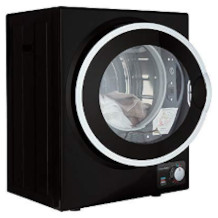
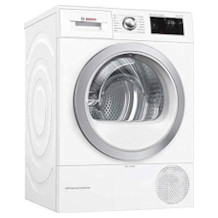
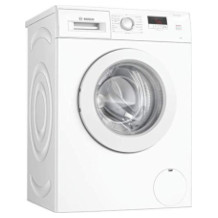
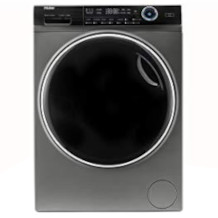
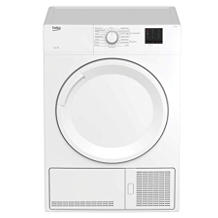






 360 reviews
360 reviews

